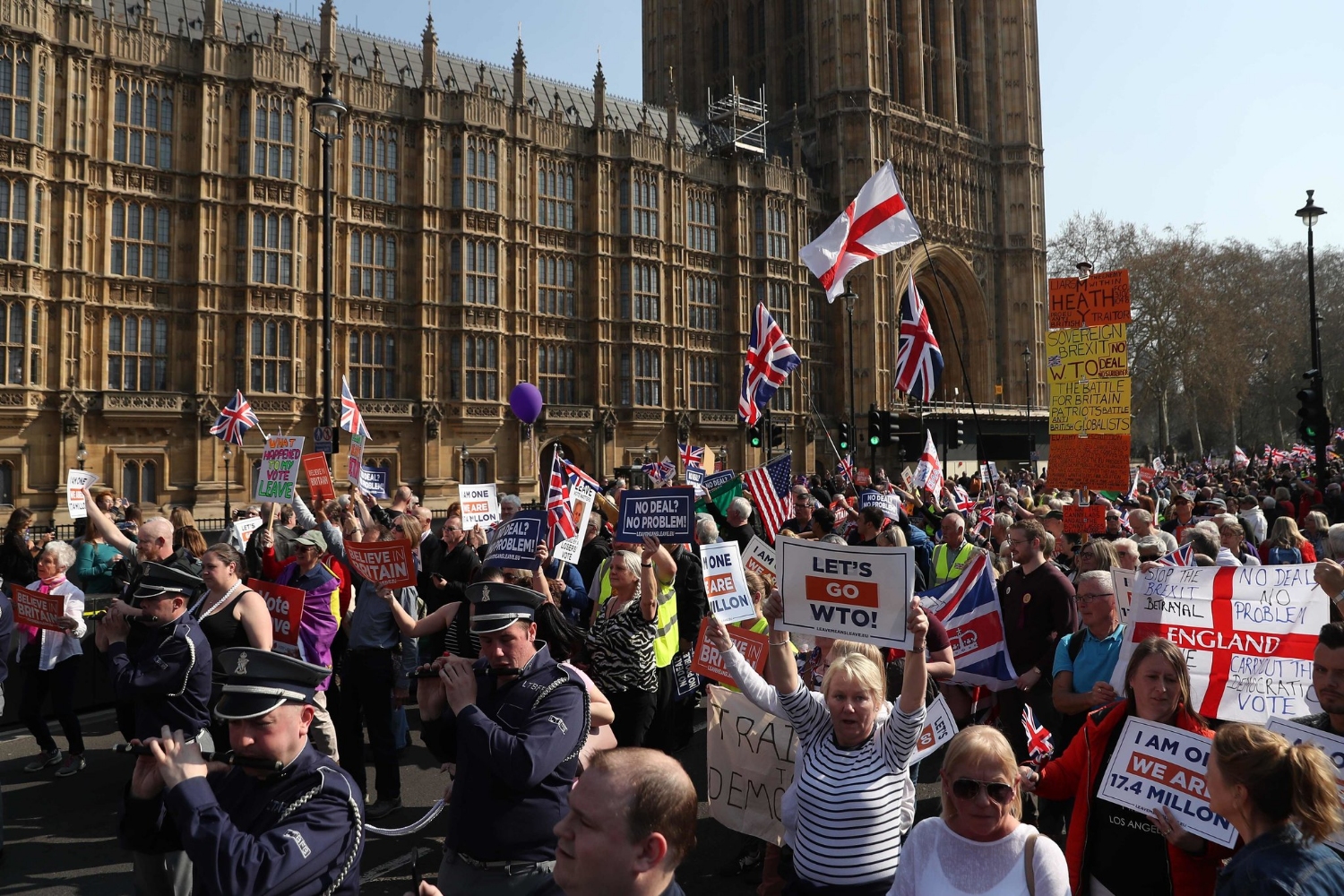This article is more than
5 year oldBrexit Live Updates: U.K. Parliament Rejects Theresa May’s Deal

With Britain in political crisis and a new deadline to leave the European Union two weeks away, Parliament rejected Prime Minister Theresa May’s Brexit plan for a third time on Friday.
• Lawmakers voted down the 585-page withdrawal agreement, which details Britain’s relationship to the European Union through the end of 2020.
• The vote means that Britain could withdraw on April 12 without an agreement — the “no-deal” Brexit that many economists and officials have warned would do serious economic damage. The only alternative may be a long delay, which is opposed by pro-Brexit lawmakers.
In a bid to win over hard-line Brexit supporters, Mrs. May had promised Conservative lawmakers this week that she would step down as prime minister if the deal were approved. The prime minister had hoped that enough lawmakers would reverse course, despite their concerns, rather than risk crashing out without a deal.

May is rejected for a third time, adding to political turmoil
British lawmakers on Friday rejected Prime Minister Theresa May’s plan for withdrawing from the European Union for the third time, leaving her policy in ruins and the casting the nation’s politics into further confusion, with the scheduled departure date looming two weeks away.
The vote on Friday might have been Mrs. May’s last chance to succeed on the issue that has dominated and defined her time in office, and the result left open an array of possibilities, including renewed demands for her resignation and early parliamentary elections.
The defeat appears to leave the increasingly weakened prime minister with two unpalatable options in the short run: Britain can leave the bloc on April 12 without an agreement in place, a chaotic and potentially economically damaging withdrawal; or Mrs. May can ask European leaders – who have ruled out a short delay if her plan failed – for what could be a long postponement.
The only thing a parliamentary majority has been able to agree on is that it does not want to crash out of the European Union without a deal. But a long delay would enrage pro-Brexit lawmakers who see a further postponement as a first step toward watering down Brexit, or even killing it entirely.
Hoping to win over Brexit hard-liners in her Conservative Party, Mrs. May promised lawmakers this week that she would step down if her plan were approved, giving the party a chance to choose a leader more to their liking to oversee the next round of negotiations. That got her some votes, but not enough.
Mrs. May has seen party discipline and her own authority shredded by successive parliamentary defeats, cabinet resignations and party defections over Brexit, and the vote on Friday left her even more battered — but apparently still in office.
In January, Parliament rejected her plan, 432 to 202 — a historic margin of defeat for a prime minister’s bill. A second vote on March 13 was another defeat, 391 to 242.
“If you want to deliver Brexit, this is the moment,” Mrs. May told Parliament.
But Parliament rebuffed her once again, 344 to 286.
What exactly were lawmakers voting on?
Parliament has twice rejected Mrs. May’s proposal, but this time there was a twist: Lawmakers were only voting on the withdrawal agreement, the legally binding part of the deal.
They have set aside, for now, a decision on the nonbinding “political declaration,” a statement of what both sides want in Britain’s long-term relationship with the European Union. The two parts were separated to get around a procedural rule that would have prevented Mrs. May from making a third attempt to get the deal through.
Mrs. May told Parliament that if Parliament approved the withdrawal agreement, it would still have to vote for a larger bill that would include the agreement — an assessment some Labour members disputed.
The withdrawal agreement sets the terms of a transition period after Britain leaves the bloc, while long-term arrangements are negotiated. It would last through the end of 2020, but could be extended for two years.
[Interested in our Brexit coverage? Join the conversation on April 1, and hear how our reporters in London are tracking these updates.]
It lays out in detail the nation’s trade relationship with the bloc, keeping Britain tied, at least temporarily, to many European Union tariff, product and immigration rules, protecting trade ties and the rights of the bloc’s citizens who are already living in Britain.
This agreement also includes language dealing with the border between Ireland, a European Union member country, and Northern Ireland, a part of the United Kingdom — a confounding and divisive issue that has proved to be the biggest sticking point in Parliament.

Keywords
Newer articles
<p>The British singer/songwriter/DJ will perform at Warner Theatre on May 16.</p>
For Putin, Gaza is an endless gift
Bombshell new theory on Titan sub disaster
Russia pounds Ukraine with biggest airstrikes in weeks
Woman'sCanadian citizenship revoked after 32 years amid 'error'
‘Orange turd’: Porn star’s swipe at Trump
WWE icon ruthlessly axed after 32 years
Justin Bieber announces huge personal news
Netflix edits out awkward Kim moment
How Kendrick Lamar and Drake changed rap beefs forever Rapid-fire releases and fast pace of modern life elevate diss war to levels unparalleled in hip-hop history.
